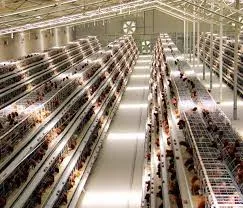Efficient Vacuum Packaging Solutions for Preserving Meat Freshness and Quality
Dec . 11, 2024 10:18 Back to list
Efficient Vacuum Packaging Solutions for Preserving Meat Freshness and Quality
The Benefits and Mechanism of Vacuum Meat Packaging Machines
In the modern food processing industry, the preservation of quality and freshness of meat products is a significant concern. One of the most effective methods for ensuring meat longevity and safety is through vacuum packaging. Vacuum meat packaging machines have revolutionized the way meat is stored and transported, offering numerous benefits for both consumers and producers alike.
What is Vacuum Meat Packaging?
Vacuum meat packaging is the process of removing air from a sealed package containing meat products. This technique significantly reduces the available oxygen within the packaging, thus hindering the growth of aerobic bacteria and fungi, which are the key contributors to spoilage. The vacuum-sealed environment also prevents freezer burn, retains the flavor and nutritional value of the meat, and makes transportation more efficient.
Key Benefits of Vacuum Meat Packaging Machines
1. Extended Shelf Life One of the primary advantages of using vacuum packaging is the extended shelf life it offers. By eliminating air, vacuum packaging can increase the storage life of meat products by several weeks to months. This is particularly essential for retailers and suppliers who require long-lasting products to meet consumer demand.
2. Enhanced Food Safety Vacuum packaging plays a crucial role in improving food safety. By minimizing oxygen exposure, the risk of microbial contamination is greatly reduced. Vacuum-sealed meat is less prone to spoilage and has a lower chance of foodborne illnesses, making it a safer choice for consumers.
3. Cost-Effectiveness For producers, vacuum packaging can lead to significant cost savings. The extended shelf life means less waste due to spoilage, cutting down on costs associated with unsold or expired products. Additionally, vacuum sealing allows for more efficient shipping and storage, as packages can be stacked and stored more compactly.
vacuum meat packaging machine

4. Improved Flavor and Freshness The vacuum sealing process locks in juices and flavors, ensuring that the meat retains its original taste profile. This is especially appealing to consumers who value high-quality food products. Meat that has been vacuum sealed is often found to be more tender and flavorful when cooked.
5. Convenience for Consumers Vacuum-packed meat products are easy for consumers to handle. They typically come in pre-portioned sizes which make cooking and meal preparation simpler. Moreover, vacuum packaging often features resealable options, allowing customers to use only what they need while keeping the rest fresh.
How Vacuum Meat Packaging Machines Work
Vacuum meat packaging machines operate through a straightforward yet effective mechanism. The process begins with placing the meat into a plastic bag or tray. The machine then removes the oxygen from the package, commonly through various vacuum generation techniques such as using an electric pump or a mechanical vacuum system. Once the air is extracted, the machine seals the package tightly to ensure that no air can enter, completing the vacuum sealing process.
There are primarily two types of vacuum packaging machines chamber vacuum sealers and external vacuum sealers. Chamber vacuum sealers are designed for high-volume tasks, as they can seal multiple packages simultaneously and are typically used in industrial settings. On the other hand, external vacuum sealers are more suited for home use or small businesses, allowing users to seal individual packages easily.
Conclusion
Vacuum meat packaging machines have become indispensable tools in the meat processing industry, providing numerous advantages that cater to producers and consumers alike. By extending shelf life, improving food safety, and enhancing flavor, these machines facilitate better food preservation practices that are essential in today's fast-paced market. As consumers continue to demand fresh, safe, and high-quality products, the role of vacuum packaging will undoubtedly grow, making it an integral part of the modern food supply chain.
-
Hot Sale 24 & 18 Door Rabbit Cages - Premium Breeding Solutions
NewsJul.25,2025
-
Automatic Feeding Line System Pan Feeder Nipple Drinker - Anping County Yize Metal Products Co., Ltd.
NewsJul.21,2025
-
Automatic Feeding Line System Pan Feeder Nipple Drinker - Anping County Yize Metal Products Co., Ltd.
NewsJul.21,2025
-
Automatic Feeding Line System - Anping Yize | Precision & Nipple
NewsJul.21,2025
-
Automatic Feeding Line System - Anping Yize | Precision & Nipple
NewsJul.21,2025
-
Automatic Feeding Line System-Anping County Yize Metal Products Co., Ltd.|Efficient Feed Distribution&Customized Animal Farming Solutions
NewsJul.21,2025






